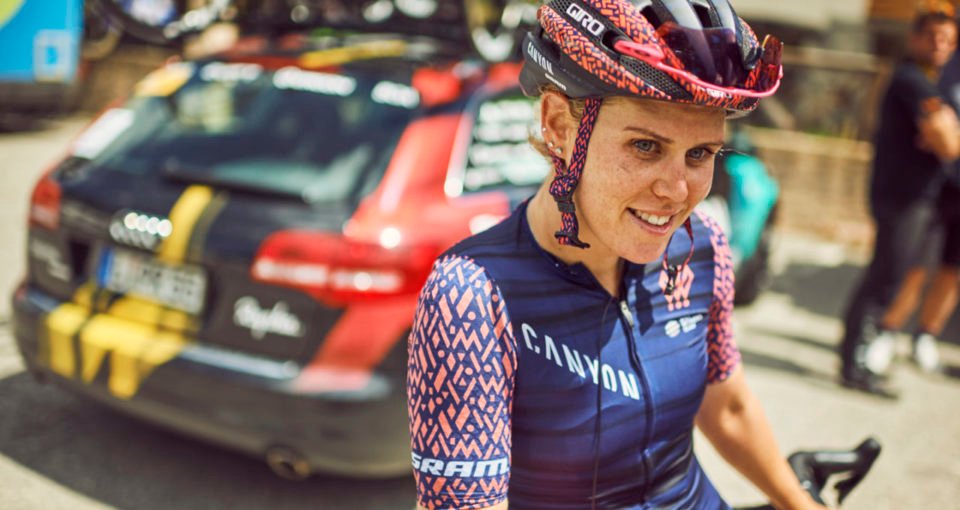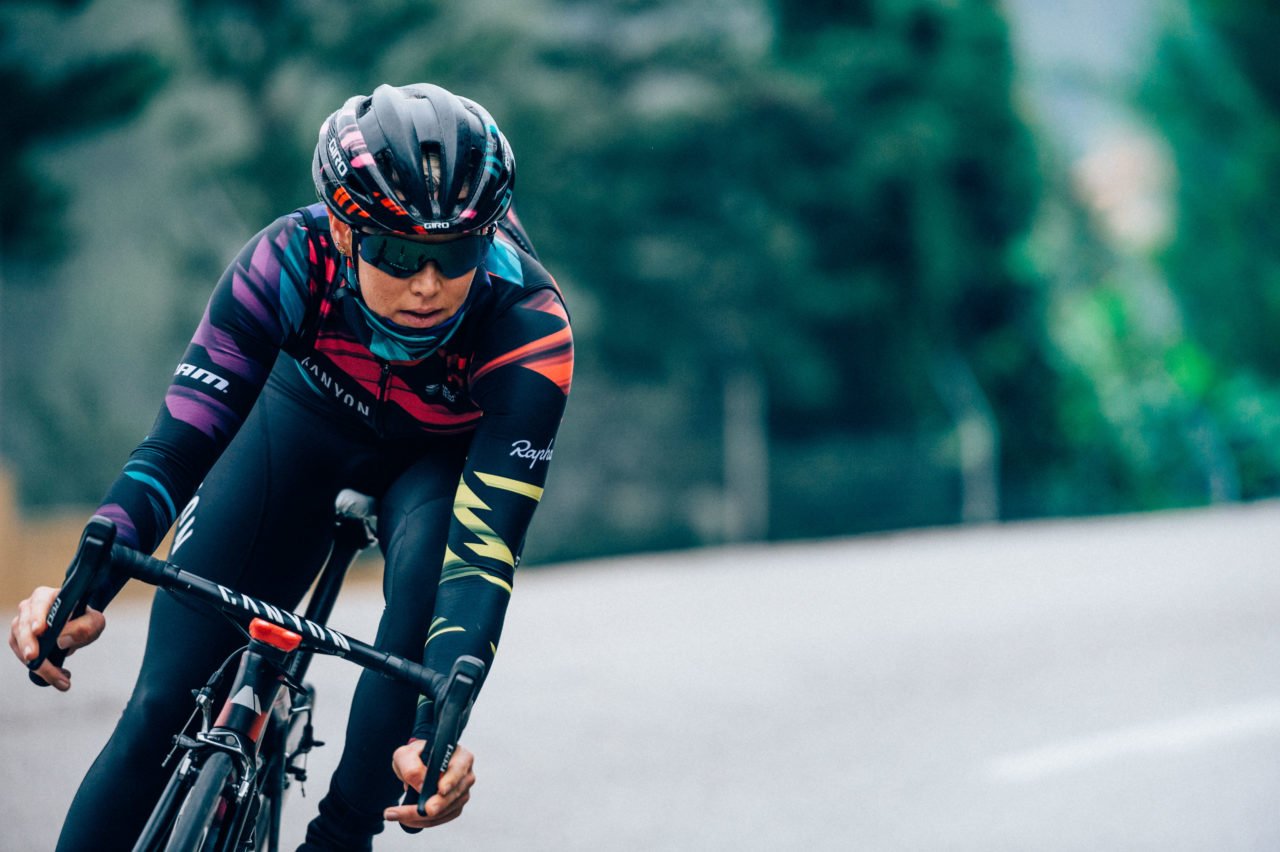Training Notes: Australian Professional Cyclist Tiffany Cromwell
Will Ross, September 19, 2017

Australia has exported several standout products and brands in recent years, accelerating its influence on the world in coffee, smashed avocado sourdough snacks and electronic dance music. In the world of sports, one of its fastest exports is Tiffany Cromwell, a professional cyclist who rides for Canyon//SRAM Racing as well as her national team.
Touring around the world with a variety of races to handle, Cromwell has mastered the dance of the international athlete, repeatedly taking top positions in the sport while retaining a charasmatic charm. Here’s how she manages her training.
Where do you usually train?
Throughout the racing season, my main training base is the South of France close to Nice. I train along the coast and in the surrounding mountains between the area of Cannes and San Remo.
How important is location for your training – access to terrain or facilities?
It’s hugely important. As with road cycling the majority of your training is done out on the open roads. Ideally you want a training location that has a variety of terrains, quiet roads that are easily accessed and limited traffic lights. Also climate and weather conditions is an important factor and the proximity to major airports as we travel a lot.
What does a typical week look like when you’re at your home base?
You’ll find me out on the bike almost every day of the week and this is how I will start my days after breakfast. The training is structured dependant on the period, I could be doing just a 1hr recovery spin or out on a 4-5hr endurance ride or a 2-3hr high intensity training. I’m in the gym 2-3 days a week doing strength or core week, most the time this will be in the afternoons. I try to book in for a regular massage at least once a week. With whatever time is left, I spend relaxing in my apartment, out on the beach enjoying the sun, perhaps catching up with friends for a coffee. Or running errands, grocery shopping and preparing daily meals, general life that I sometimes need to catch up on between my travels.
What kind of training do you do when you’re short of time?
I try to make the training short but intense so I get quality over quantity. Sometimes the sessions don’t need to be super long to still reap plenty of benefits. It may be a one hour trainer session where I will do a block of very high intensity and controlled efforts with short recovery. Or I’m out on the road and condensing perhaps a longer interval session that had a long period of general riding before or after the efforts so then I’m still getting the quality but I don’t feel like I lose too much of the session if I’m limited on time.

Do you mainly train alone or with other people or groups?
It changes, it’s really dependant on a few factors. The type of training I need to do, the people who happened to be around and training when you’re there as it’s a very transient place where I’m based. Generally for longer base rides I like to have company either with one other or a small group. Recovery rides I enjoy with a big group, as long as it’s relaxed. When I have really specific work to do then it’s easier to just go out and do it on my own. That being said, it’s often easier for the motivation if you have someone to meet so you don’t spend the morning delaying getting on the bike, especially when it’s a hard session that you know is just going to hurt.
How does your winter training differ from your summer training?
Winter training is all about building the foundations for the season ahead. Winter training is often more relaxed, longer hours and less stressful. It’s the time where you just need to spend hours on the bike, but you get to really appreciate the beauty of just riding without focusing on numbers. Winter training you also go through the phases and slowly introduce efforts as you rebuild your form, you often see a lot of progress in a short period. Summer training is much more specific, it is really focused on training for the races you’re targeting. The hours become less but the intensity and specificity becomes much more increased. Summer training is also a lot about maintaining form, focusing on the 1 and 2 percenters and most importantly the recovery between races.
How has your training evolved in the course of your career?
It has become a lot more specific over the years with a great focus on the science and numbers behind the training. It has also become a lot more targeted to specific goals. When I started out, I used to ride with groups a lot and often with boys, I would use that to push myself and it would get me really strong. It was great for learning to suffer and it was fun to just go out and have unstructured rides, racing each other and just mucking around. In Australia this type of training was always easier as group riding is a lot more common. When I moved overseas I had to learn to train on my own and couldn’t rely on groups. That’s when I learnt the importance of more targeted and specific training.
How important is nutrition for you?
It’s super important, especially if you want to be at the type of your game. At the end of the day nutrition is fuel for your body, your body is your engine for your bike, so if you don’t fuel it correctly then you can’t expect it to perform at its maximum. I’m not always perfect with my nutrition but I do notice a big difference in how I feel both on and off the bike when I’m really focused on my nutrition and eating and drinking correctly.
What are your nutrition secrets, recipes or snacks that everyone should think about using?
I’m a big believer in feeling your body with wholesome ingredients and spending the time to make things from scratch as opposed to always reaching for the pre packaged and ‘easy’ option. My favourite training food to put in my back pocket would have to be my homemade banana bread, it’s dense and taste so good and gives you plenty of energy needed to get through your training. Otherwise switching out your traditional carb options of pasta and rice for ‘super grains’ where you can get a lot more bang for your bike. I love incorporating things like Quinoa, Millet and spelt into my meals oh and avocado should be consumed regular, mainly because it’s just so good but also has plenty of great health benefits. When you’re short on time in the mornings or can’t stomach a big breakfast before you train, go for a smoothie option. It’s amazing the combinations you can come up with and the lasting energy it can give without it being too heavy.
What other parts of your work are important for your career, but aren’t specifically to do with training? What is important “behind-the-scenes” work?
It’s really important to have strong organisational skills, be able to adapt quickly to change of plans and to be able to immerse yourself into local cultures and be able to adapt to living and travelling through different countries with sometimes big cultural difference. You also need strong personal drive and discipline.
If you weren’t a professional athlete, what would you be doing?
Something in the creative or fashion industry. Or travelling the world as a travel blogger.
Follow Tiffany Cromwell on Instagram and Twitter, or jump onto her website, tiffanycromwell.cc, for some excellent blogs and her detailed racing calendar.
Header image: Tino Pohlmann